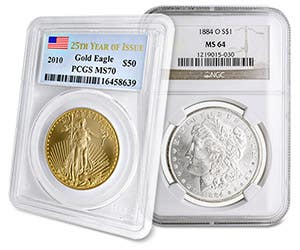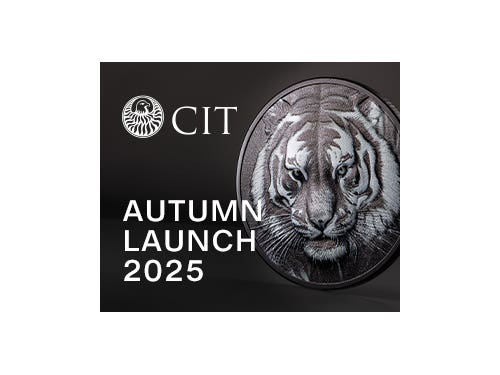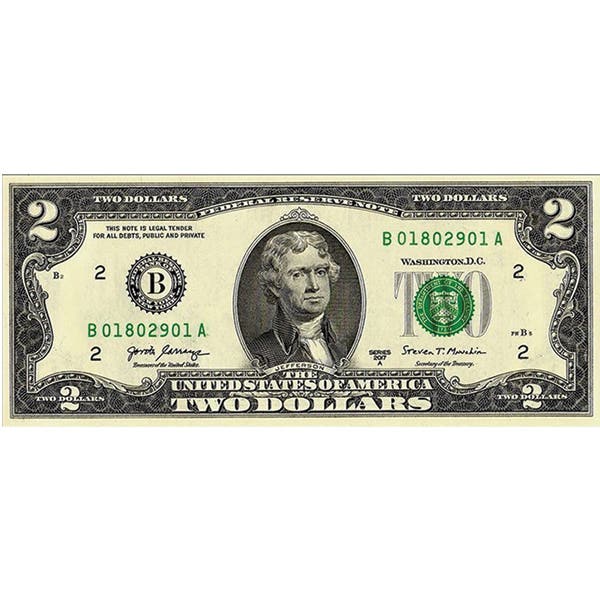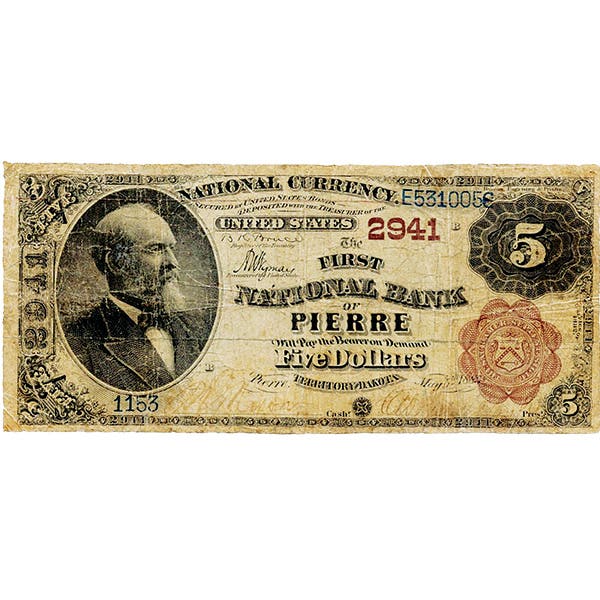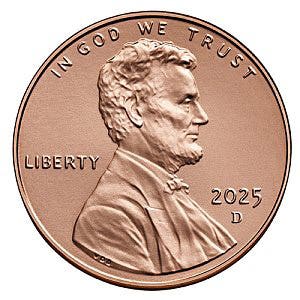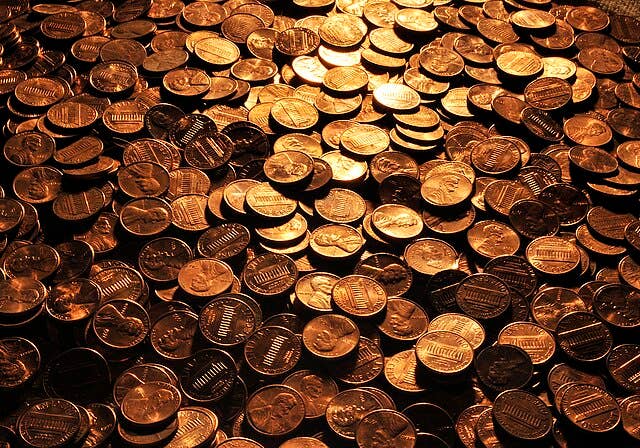This week’s letters (08/02/11)
As a coin, the dollar coin is ugly. Not the designs, but the condition they are in when they come from the Mint. All of the coins seem beat to death with scuffs and bag marks, as though they have been through a rock tumbler. I get 12-year old cents and dimes in better shape. The dollar coins are not made with metals that are conducive to eye appeal after normal distribution practices by the Mint. I have to go through several rolls to find even one coin that I can add into my raw set.
Dollar coin condition terrible when leaving Mint
As a coin, the dollar coin is ugly. Not the designs, but the condition they are in when they come from the Mint. All of the coins seem beat to death with scuffs and bag marks, as though they have been through a rock tumbler.
I get 12-year old cents and dimes in better shape. The dollar coins are not made with metals that are conducive to eye appeal after normal distribution practices by the Mint. I have to go through several rolls to find even one coin that I can add into my raw set.
Things only get worse once they circulate. They start to stain or tarnish almost immediately, and look even worse.
If the public is not forced to use the coins by demonetizing the dollar bill, then the mountain of coins in storage should be melted.
I wouldn’t mind that at all, it will make my hoard worth more one day!
Alan Hepler
Laytonsville, Md.
Ways to promote public’s use of dollar coins
The way to get people to use the dollar coin is actually quite simple.
First, eliminate the cent and nickel, as they are too costly to make.
Second, eliminate the one dollar bill.
When one considers that today’s quarter has equal purchasing power to what the cent did in 1900, it makes no sense to continue minting coins that have lost virtually all their value.
As a result of taking these measures, the half dollar will become more useful as well, and finally start to see some real circulation.
The economy will run just fine with the dime, quarter, half, and dollar coins.
Ralph Haines, Jr.
Edgewood, Md.
Use the Postal Service to get dollar coins out
Since the U.S. Postal Service is bleeding money, ship the coins to all the post offices, and let them run the following promotion: Every 25th person to come in and buy stamps receives a dollar coin.
Another possibility would be to give the dollar coins to the U.S. Department of Education as part of its budget. Have them distribute the coins to state and local school systems to give to elementary school students as student aid and education materials.
Maybe, considering the mark-up of gold and silver bullion coins at the Mint, they could add a dollar to the price of each coin, and then give the purchaser a dollar coin along with whatever else they ordered. Collectors could then spend the coins, or have them slabbed, and sell them on the numismatic market.
Cynthia G. Weaver
Florence, Ala.
Stop printing the dollar note, use the dollar coin
The solution to the dollar coin fiasco is easy. Stop printing the dollar bill.
The public might be outraged, but the one dollar denomination will still be necessary in every day commerce, so people will use the coin.
I don’t buy arguments about how cash register drawers would have to be refitted. I worked as a cashier in college. The drawers have five slots, and I only ever used four of them. The fifth only held paperclips, rubber bands, the occasional Anthony dollar or Kennedy half dollar.
The conversion would be extremely easy, and the economy would barely skip a beat.
Curtis Baade
Address withheld
Smart spending practices can save money
I have been ordering coins on my credit card, since it gives me back a percentage on every purchase. Since the coins I order have free shipping I make some money.
Then, I lower my gasoline bill by finding a gas station that lowers the cost per gallon for doing cash transactions. I save about six cents per gallon this way. I make money on the purchase of the coin online, then make money by cost avoidance in the use of the coins.
You can also use the coins to pay for items that won’t allow use of cards, like city taxes or water bills.
If you put some thought into your spending, you can benefit by getting the perks of the card on some items, and the perks of cash on others.
Guy Faucher
Address withheld
Seminar leader addresses collector’s concerns
This is in response to A.J. Williams’ Viewpoint in the June 28 issue of Numismatic News.
Mr. Williams, like many others, equates the “cleaning” of a coin to the “conserving” of a coin. When this question comes up in the various grading courses at the American Numismatic Association Summer Seminar, I try to explain to the students my take on the difference.
In my opinion, the “conservation” of a coin is something that is done to the specimen to try to preserve or restore it to its original condition, or nearly so. In the majority of the cases, the items involved are uncirculated coins that have been affected, in one way or another, by influences of the condition to which they were subjected. A good example of this would be the gold pieces that were resurrected from the various shipwrecks off the eastern coast.
The key difference, in my eyes, is that conservation of a coin enhances its eye appeal without altering the original luster, whereas cleaning usually involves the removal of that luster in varying degrees.
On circulated coins, in most cases, original luster isn’t a factor, since most or all of it is gone. In this case, increasing the subject’s eye appeal might be accomplished in several ways, but retaining as much as possible of the originality is paramount.
As I said, eye appeal is a major element, and if a coin has been conserved properly, it should not appear to have been cleaned.
Mr. Williams also addresses the grading concept of the current one, overall grade system vs. a system that would grade the obverse and reverse of a coin.
Another point we stress at the grading seminars is that on all coins, one side is the “money” side. In most cases it is the obverse, as that is the side most collectors look at first to establish an initial grade. On the Morgan dollar, for example, Liberty’s face is the first point of interest. Are there very noticeable contact marks, wear or abrasions? Has the original luster been disturbed?
The “money” side is given higher weight when assigning a grade because it is the first side you usually look at for eye appeal. The non-money side certainly enters into the equation, but the third party grading services currently grade primarily by the money side.
As an example, if a 1880-S Morgan dollar has some contact marks or scuffs on the cheek, the prime focal area, it might receive an MS-63 grade, depending on how severe the marking is. Even if the reverse of the coin is a nice MS-65 with few marks, the coin would most likely end up in an MS-63 holder. Why? Because the “money” side talks the loudest.
Mr. Williams raises another point of contention when he notes that he can’t tell the difference between an MS-67 and an MS-68. He’s not alone on this quandary. I can rarely tell the difference in most cases.
Still, consider this: Third party grading experts see so many coins every day that their eyes are conditioned to detect the very subtle detractions that enable them to make this call. My good friend Ken Bressett postulates that “grading is really quite simple ... all you need are four things: a good light, a good magnifier, a good memory and 20 years’ experience.”
Finally, Mr. Williams suggests that instead of the current 1 to 70 Sheldon grading scale, a 1 to 100 range would be more accurate. I couldn’t agree more!
However, changing horses midstream would be absolutely chaotic, due to the millions of slabs already on the market.
Can you imagine trying to convert those grades to the new system? It would be a nightmare. If the 1 to 100 scale had been adopted right at time when slabs first appeared, it wouldn’t have been a problem. I’m afraid, however, that attempting a change now would be like trying to sweep sand against the tide.
I hope this has offered Mr. Williams a new perspective on the points he raised.
Bill Fivaz
Dunwoody, Ga.
Vending machines perfect for circulating dollar coins
Vending machines are the perfect vehicle to distribute dollar coins. The machines should be modified to accept only higher denomination dollar bills and reject one dollar notes.
Since the machines would give dollar coins as change, these coins will become more popular and see more usage. That will lead to a decrease in public support for the dollar note, allowing for the notes to be demonetized and removed from circulation.
P. K. Saha
Address withheld
BEP should set a definite end date for dollar notes
I believe that the only way to settle the dollar coin issue is for the Bureau of Engraving and Printing to set a specific end date for the one dollar bill. As of that date, dollar notes would no longer be legal tender. All dollar bills would have to redeemed by that date, and from then on only dollar coins would be accepted as legal tender.
Russell Wayman
Logan, Utah
Send the dollar coin stockpile overseas
The government should use the dollar coins to pay down the U.S. trade debt to China and Japan. Just make sure that they absorb the shipping charges.
Richard McGhee
Address withheld




